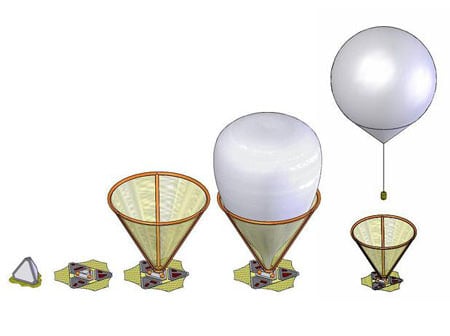[/caption]
A future Mars mission could include instruments attached to balloons, providing the capability to study places where rovers can't go, while offering a closer look than orbiting satellites. NASA has awarded a Small Business Innovative Research (SBIR) Phase I contract to Aurora Flight Sciences and its partner Vertigo Inc, to develop an autonomous balloon launcher to operate from the surface of Mars. Aurora is looking to develop a compact lightweight system that could be included on future Mars landers, augmenting the mission with a small aerial vehicle. Such a system would have potential for atmospheric sampling and video data capture unavailable on current Mars missions.
Balloon-based Mars exploration has the capability to cover a larger portion of the Martian surface than is accessible via a rover and to provide better resolution than is available from satellites. Balloons could be used to measure atmospheric data at different altitudes and locations on Mars.
"A major challenge to ground deployment is the possibility of the envelope being damaged by winds, surrounding rocks, or parts of the associated lander," said the project's manager, George Kiwada. "Our Shielded Mars Balloon Launcher (SMBL) concept addresses this challenge by using inflatable structures to provide a safe environment for balloon inflation and deployment."
Balloons have been flying for decades in Earth's stratosphere, which has an atmosphere as thin as that on the surface of Mars. Conventional stratospheric balloons have lifetimes limited to a few days because of the daily heating and cooling of the balloon. Helium superpressure balloons, currently under development for the Ultra Long Duration Balloon (ULDB), will fly more than 100 days and perhaps as long as a year. Smaller superpressure balloons carrying payloads of only a few kilograms have already flown for as long as a year.
Aurora's has done previous work with NASA on the development of a Mars airplane. In that project, Aurora became familiar with the challenges of aerial vehicle operations in the Martian atmosphere.
Source: Aurora Flight Sciences
 Universe Today
Universe Today
